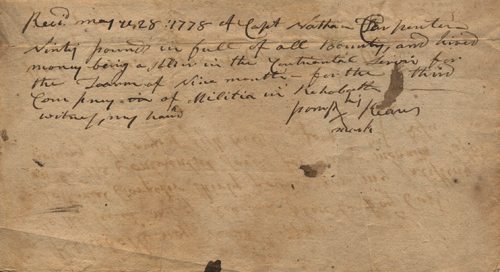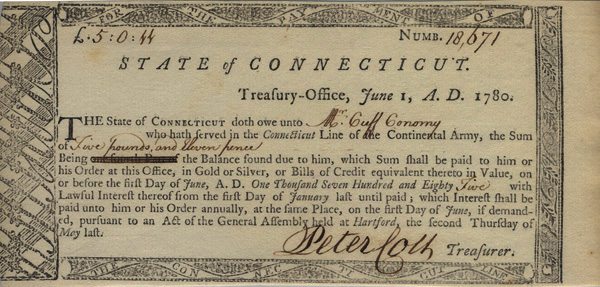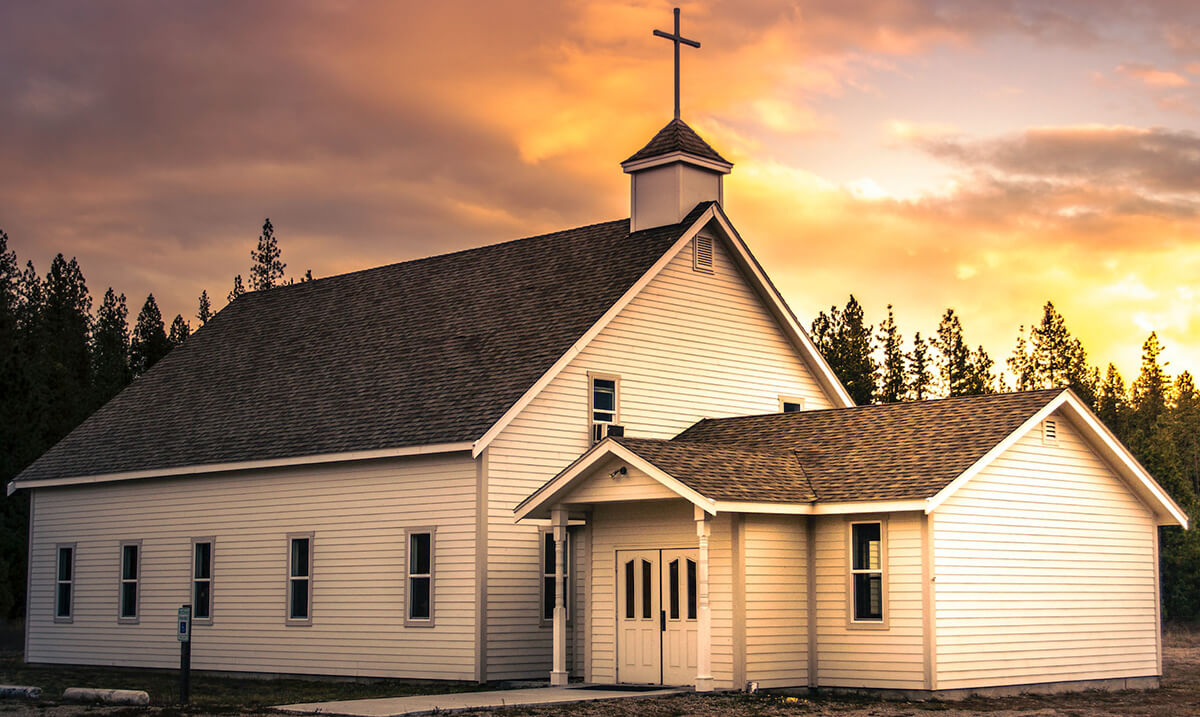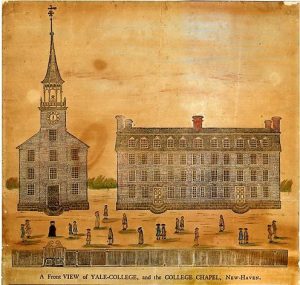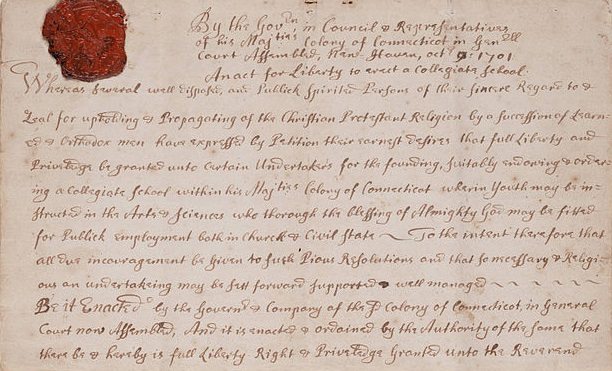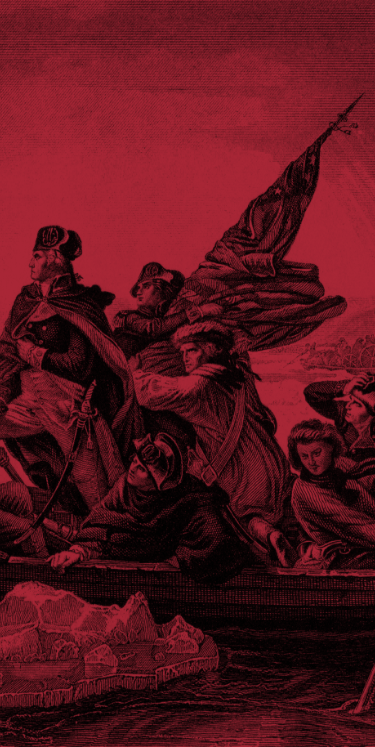America’s founding was blessed by the contributions of many individuals who are little, or even completely unknown to us today. Charles Thomson is one such unsung patriot.
In 1774 he was beginning to make a name for himself as a patriotic leader in Philadelphia. John Adams noted, “This Charles Thompson is the Sam Adams of Philadelphia — the Life of the Cause of Liberty, they say.”1
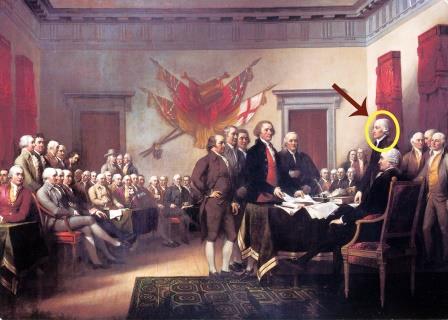 Though never a member of that august body, as Secretary of the Continental Congress for over fifteen years, Thomson had a front-row seat to the birth of the nation and his fingerprints are all over America’s establishing documents. For example, the copy of the Declaration of Independence included with the official Journals of Congress were in Thomson’s handwriting, and he was one of only two people who actually signed it on July 4th.2
Though never a member of that august body, as Secretary of the Continental Congress for over fifteen years, Thomson had a front-row seat to the birth of the nation and his fingerprints are all over America’s establishing documents. For example, the copy of the Declaration of Independence included with the official Journals of Congress were in Thomson’s handwriting, and he was one of only two people who actually signed it on July 4th.2
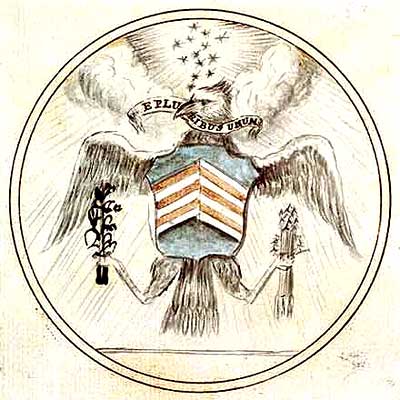 Thomson is also responsible for the Great Seal of the United States, which he prepared and Congress approved in 1782.3
Thomson is also responsible for the Great Seal of the United States, which he prepared and Congress approved in 1782.3
As the First Congress took its place under the new government created by the Constitution, Thomson retired from that long-term post. His last official act was personally notifying George Washington that he had been unanimously selected the President of the United States.4
But Thomson was not only a great patriot and supporter of the American cause, he was also a champion of the Word of God. In fact, his name is associated with some of America’s earliest Bible editions.
For example, his name, as Secretary of Congress, is found in the introduction to “The Bible of the Revolution,” which was the first Bible printed in English in America. That Bible was printed by Robert Aitken, the official printer of the Continental Congress. Aitken described his Bible as “a neat edition of the Holy Scriptures for the use of schools.”5 It was reviewed and approved by a committee of the Continental Congress, and published with the official congressional endorsement prominently in the front. (All of the original books pictured below that are associated with Charles Thomson are from our collection at WallBuilders.)
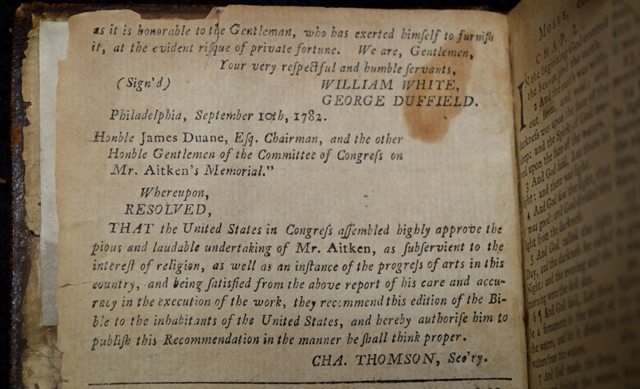 Thomson was also responsible for the first American translation of the Greek Septuagint (the full Greek Bible) into English in 1808 – a labor of love that consumed nearly two decades of his life.6 Called Thomson’s Bible, it is a four volume-set that is considered one of the most scholarly of American Bible translations.
Thomson was also responsible for the first American translation of the Greek Septuagint (the full Greek Bible) into English in 1808 – a labor of love that consumed nearly two decades of his life.6 Called Thomson’s Bible, it is a four volume-set that is considered one of the most scholarly of American Bible translations.
 Thomson also produced an eight-volume set in which every other page was blank, thus allowing readers space to write notes on the Scriptures as they studied them.
Thomson also produced an eight-volume set in which every other page was blank, thus allowing readers space to write notes on the Scriptures as they studied them.
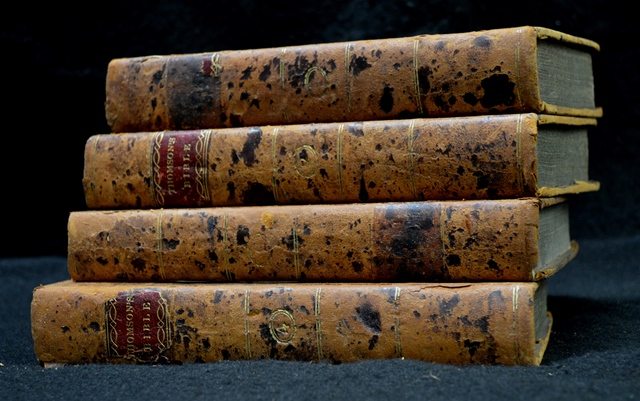 In 1815, Thomson published his famous Synopsis of the Four Evangelists, in which he took all the passages from the four Gospels and arranged them chronologically, producing something like one super long Gospel, with all Jesus’ words and acts arranged sequentially. Today, we call such a work a synoptic Gospel.
In 1815, Thomson published his famous Synopsis of the Four Evangelists, in which he took all the passages from the four Gospels and arranged them chronologically, producing something like one super long Gospel, with all Jesus’ words and acts arranged sequentially. Today, we call such a work a synoptic Gospel.
George Washington praised Thomson’s dedication, “Your Services have been important, as your patriotism was distinguished” He added his belief that “Posterity will find your Name so honorably connected…”7 Sadly, today, Charles Thomson has become a forgotten Founding Father, but his influence, both politically and spiritually, permanently shaped the course of America and blessed American life.
February 14, 2024 This post has been updated to correct information regarding Thomson’s American translation of the Bible.
Endnotes
1 John Adams, diary entry from August 30, 1774, Adams Family Papers, Massachusetts Historical Society, accessed November 1, 2023.
2 John Hancock was the second and the other delegates signed weeks later. Journals of the Continental Congress 1774-1779, edited from the original records in the Library of Congress by Worthington Chauncey Ford, Chief, Division of Manuscripts, Washington DC: Government Printing Office, 1905, The Avalon Project, Yale Law School, accessed November 1, 2023.
3 “Original Design of the Great Seal of the United States (1782),” Milestone Documents, National Archives, updated October 23, 2023.
4 Lewis R. Harley, Charles Thomson: Patriot and Scholar (Norristown, PA: Historical Society of Montgomery County, 1897), 28-29.
5 The Holy Bible as Printed by Robert Aitken and Approved & Recommended by the Congress of the United States of America in 1782, reprinted (New York: Arno Press, 1968), Introduction.
6 Harley, Charles Thomson: Patriot and Scholar (1897), 33-34.
7 George Washington to Charles Thomson, July 24, 1789, Founders Online, National Archives, accessed November 1, 2023.
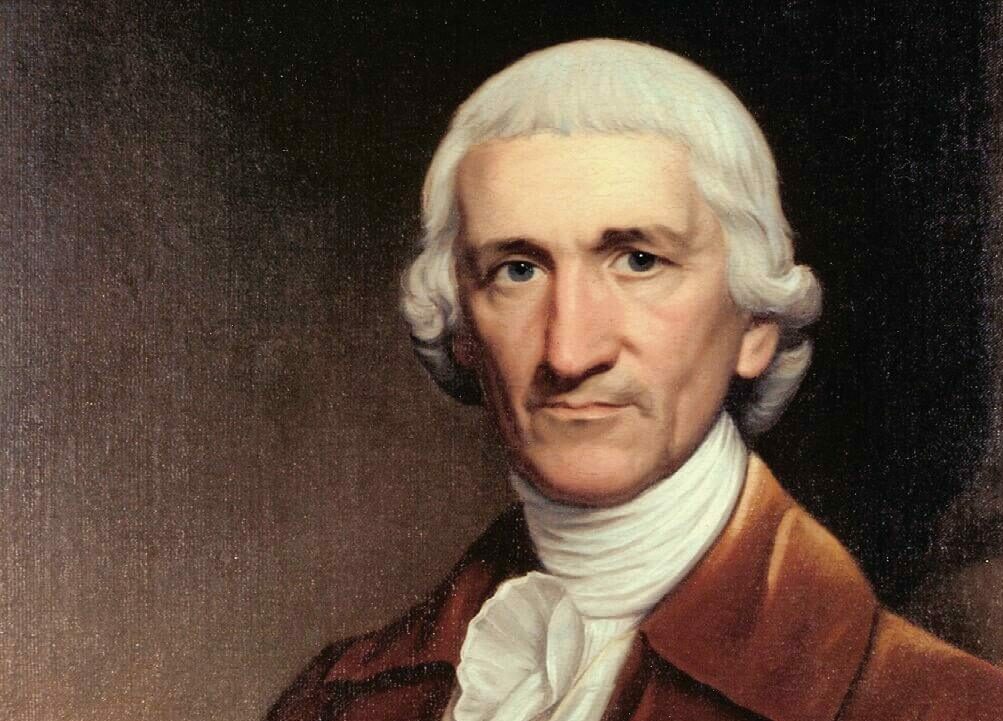
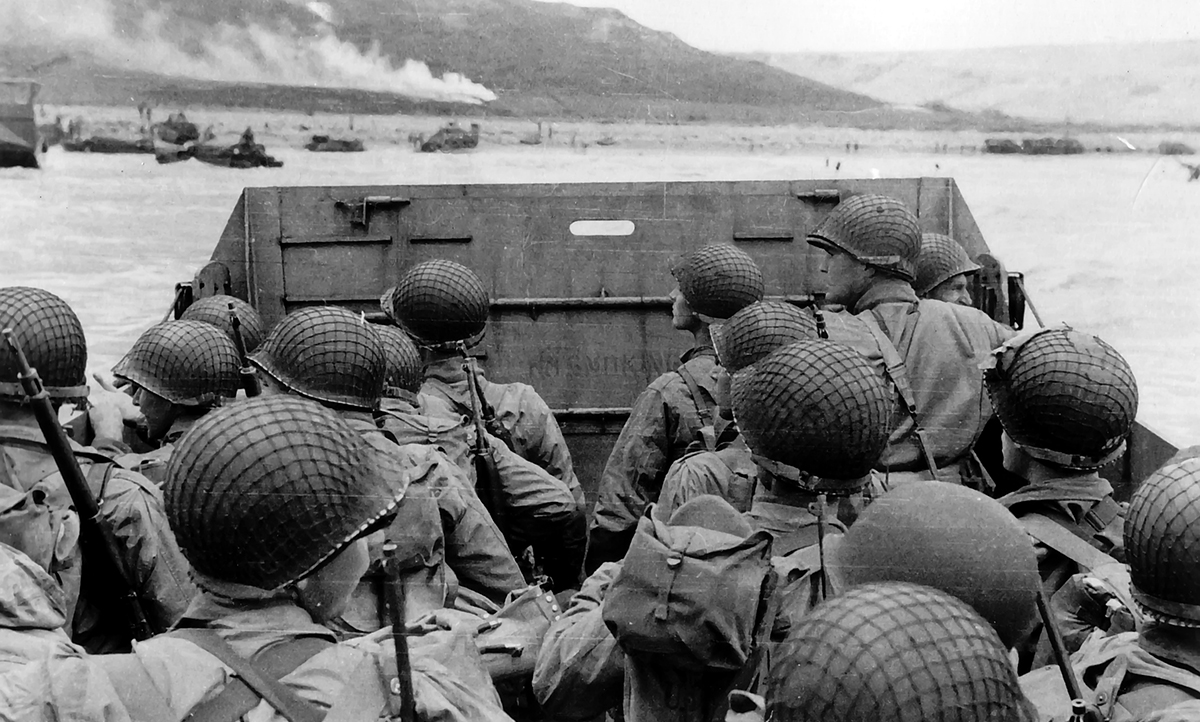
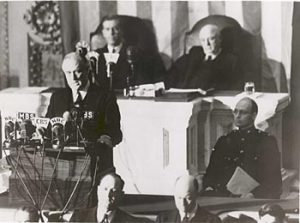 However, all of that changed with the bombing of Pearl Harbor in 1941. In his famous “date which will live in infamy” message to Congress requesting that the United States officially declare war on Japan, President Roosevelt stated, “With confidence in our armed forces — with the unbounding determination of our people — we will gain the inevitable triumph — so help us God.”
However, all of that changed with the bombing of Pearl Harbor in 1941. In his famous “date which will live in infamy” message to Congress requesting that the United States officially declare war on Japan, President Roosevelt stated, “With confidence in our armed forces — with the unbounding determination of our people — we will gain the inevitable triumph — so help us God.”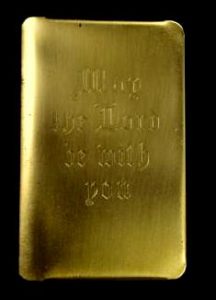 This confidence in God and our military (along with his concern for individual American soldiers) was later evident in what is now known as The Heart-Shield Bible. These Bibles (used during World War II) were designed to fit securely into the chest pocket of a soldier’s uniform. The metal plates were securely attached to the front cover of the Bible to stop a bullet from reaching the soldier’s heart (which they did on several occasions). In our library at WallBuilders we have several of these World War II Bibles. In the back is a section of psalms and hymns, including “My Country ‘Tis of Thee,” “America the Beautiful,” and “The Star Spangled Banner.” In the front, there is a note to the soldiers directly from President Franklin D. Roosevelt.
This confidence in God and our military (along with his concern for individual American soldiers) was later evident in what is now known as The Heart-Shield Bible. These Bibles (used during World War II) were designed to fit securely into the chest pocket of a soldier’s uniform. The metal plates were securely attached to the front cover of the Bible to stop a bullet from reaching the soldier’s heart (which they did on several occasions). In our library at WallBuilders we have several of these World War II Bibles. In the back is a section of psalms and hymns, including “My Country ‘Tis of Thee,” “America the Beautiful,” and “The Star Spangled Banner.” In the front, there is a note to the soldiers directly from President Franklin D. Roosevelt.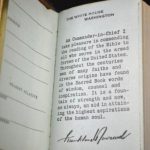 As Commander-in-Chief I take pleasure in commending the reading of the Bible to all who serve in the armed forces of the United States. Throughout the centuries men of many faiths and diverse origins have found in the Sacred Book words of wisdom, counsel and inspiration. It is a foundation of strength and now, as always, an aid in attaining the highest aspirations of the human soul.
As Commander-in-Chief I take pleasure in commending the reading of the Bible to all who serve in the armed forces of the United States. Throughout the centuries men of many faiths and diverse origins have found in the Sacred Book words of wisdom, counsel and inspiration. It is a foundation of strength and now, as always, an aid in attaining the highest aspirations of the human soul.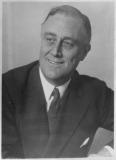 We cannot read the history of our rise and development as a Nation without reckoning with the place the Bible has occupied in shaping the advances of the Republic. . . . Where we have been truest and most consistent in obeying its precepts we have attained the greatest measure of contentment and prosperity; where it has been to us as the words of a book that is sealed, we have faltered in our way, lost our range finders, and found our progress checked. It is well that we observe this anniversary of the first publishing of our English Bible. The time is propitious to place a fresh emphasis upon its place and worth in the economy of our life as a people.
We cannot read the history of our rise and development as a Nation without reckoning with the place the Bible has occupied in shaping the advances of the Republic. . . . Where we have been truest and most consistent in obeying its precepts we have attained the greatest measure of contentment and prosperity; where it has been to us as the words of a book that is sealed, we have faltered in our way, lost our range finders, and found our progress checked. It is well that we observe this anniversary of the first publishing of our English Bible. The time is propitious to place a fresh emphasis upon its place and worth in the economy of our life as a people.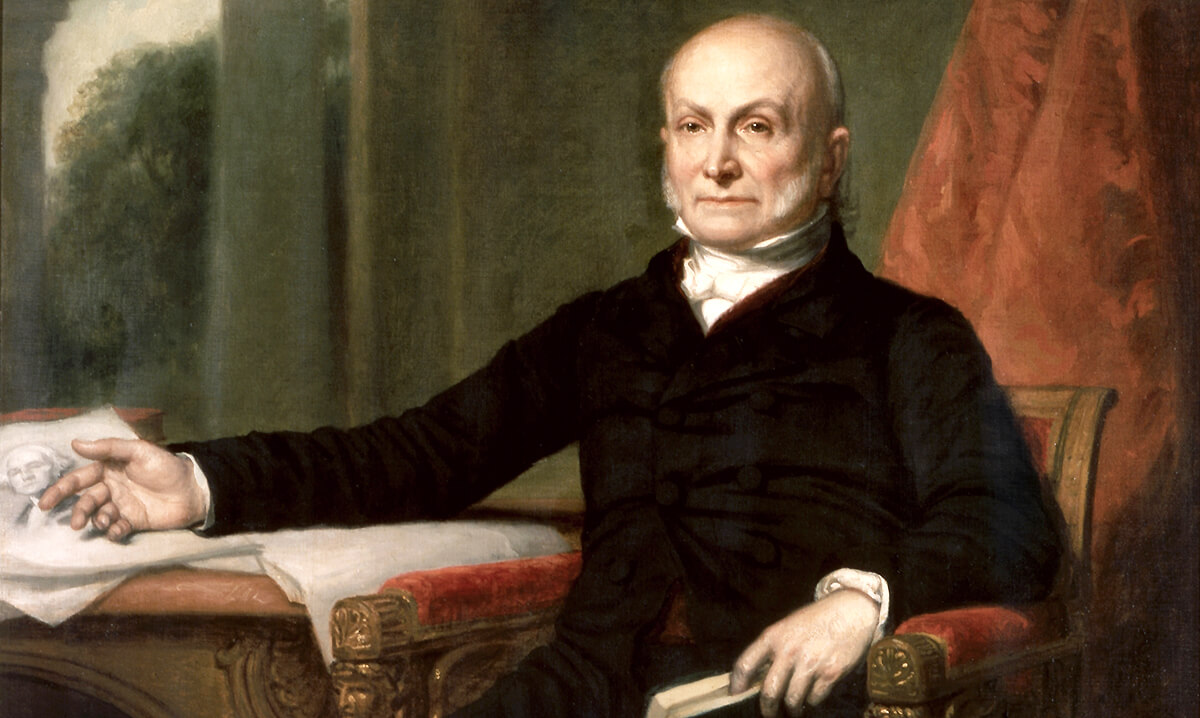
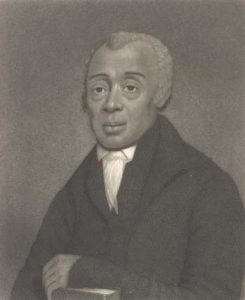 Black History Month is a special time to focus on black history, which interestingly often involves not just Black Americans but also those of other races. As famous Black American minister Richard Allen reminded his brethren during the Founding Era, “Many of the white people have been instruments in the hands of God for our good [and] are now pleading our cause with earnestness and zeal.”
Black History Month is a special time to focus on black history, which interestingly often involves not just Black Americans but also those of other races. As famous Black American minister Richard Allen reminded his brethren during the Founding Era, “Many of the white people have been instruments in the hands of God for our good [and] are now pleading our cause with earnestness and zeal.”  Adams also led the legal defense of the African slaves in the famous Amistad case
Adams also led the legal defense of the African slaves in the famous Amistad case 
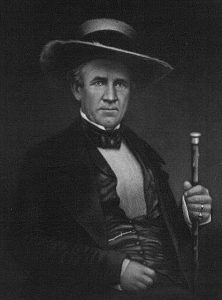
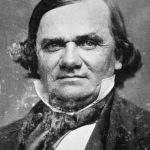
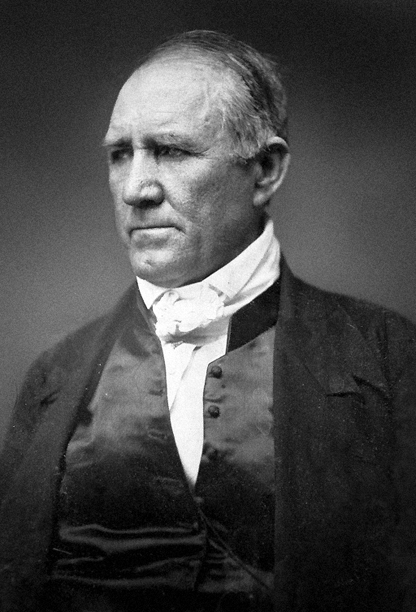 …I certainly can see no more impropriety in ministers of the Gospel, in their vocation, memorializing [petitioning] Congress than politicians or other individuals. . . . Because they are ministers of the Gospel, they are not disfranchised of political rights and privileges and . . . they have a right to spread their opinions on the records of the nation. . . . The great Redeemer of the World enjoined duties upon mankind; and there is [also] the moral constitution from which we have derived all the excellent principles of our political Constitution – the great principles upon which our government, morally, socially, and religiously is founded. Then, sir, I do not think there is anything very derogatory to our institutions in the ministers of the Gospel expressing their opinions. They have a right to do it. No man can be a minister without first being a man. He has political rights; he has also the rights of a missionary of the Savior, and he is not disfranchised by his vocation. . . . He has a right to interpose his voice as one of its citizens against the adoption of any measure which he believes will injure the nation. . . . [Ministers] have the right to think it is morally wrong, politically wrong, civilly wrong, and socially wrong. . . . and if they denounce a measure in advance, it is what they have a right to do.
…I certainly can see no more impropriety in ministers of the Gospel, in their vocation, memorializing [petitioning] Congress than politicians or other individuals. . . . Because they are ministers of the Gospel, they are not disfranchised of political rights and privileges and . . . they have a right to spread their opinions on the records of the nation. . . . The great Redeemer of the World enjoined duties upon mankind; and there is [also] the moral constitution from which we have derived all the excellent principles of our political Constitution – the great principles upon which our government, morally, socially, and religiously is founded. Then, sir, I do not think there is anything very derogatory to our institutions in the ministers of the Gospel expressing their opinions. They have a right to do it. No man can be a minister without first being a man. He has political rights; he has also the rights of a missionary of the Savior, and he is not disfranchised by his vocation. . . . He has a right to interpose his voice as one of its citizens against the adoption of any measure which he believes will injure the nation. . . . [Ministers] have the right to think it is morally wrong, politically wrong, civilly wrong, and socially wrong. . . . and if they denounce a measure in advance, it is what they have a right to do. 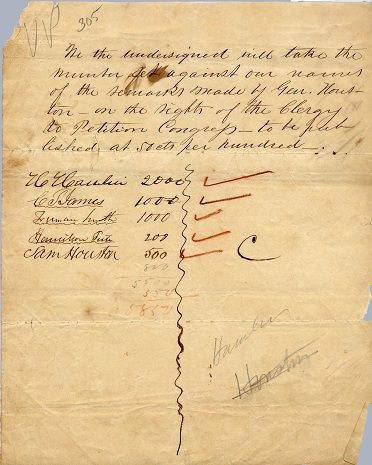
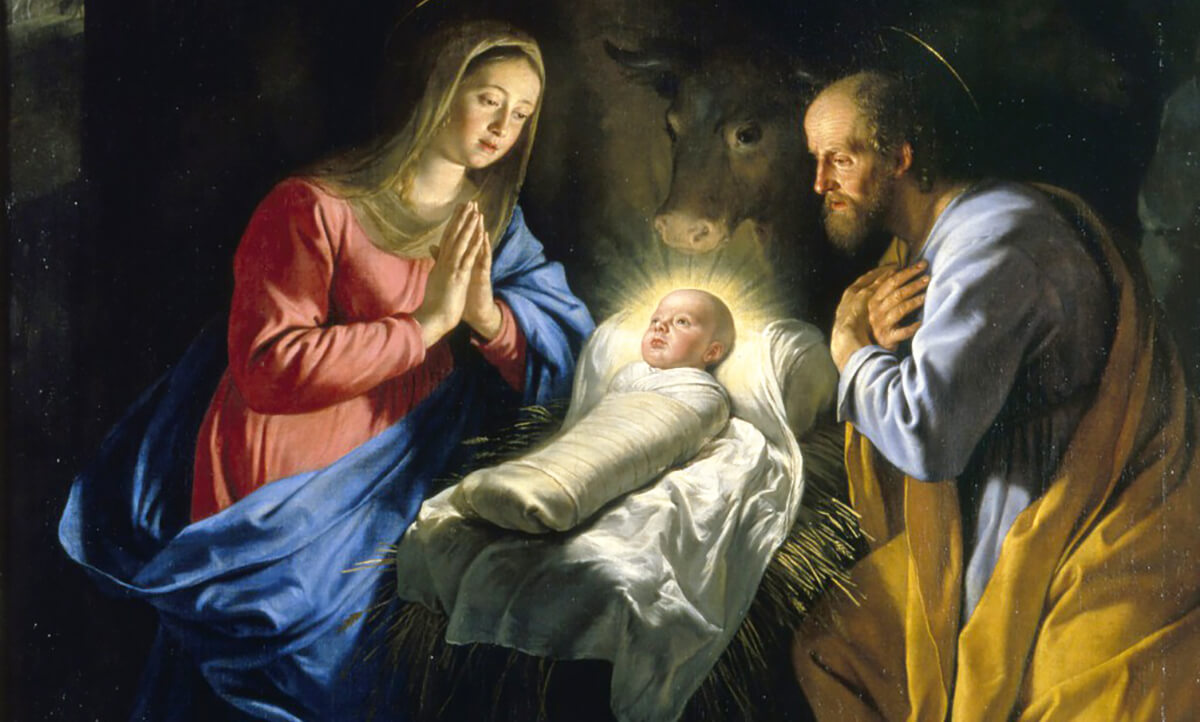
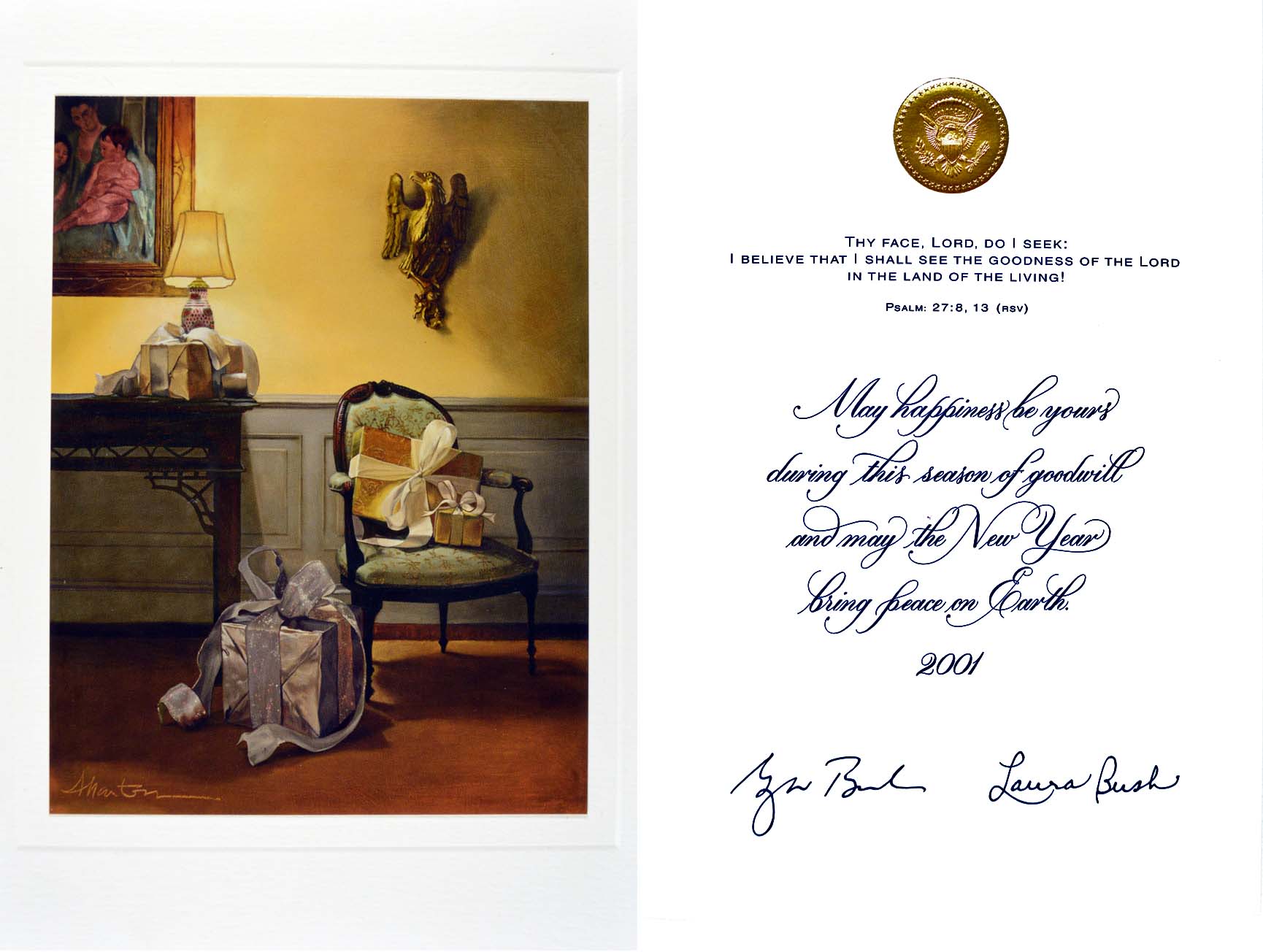
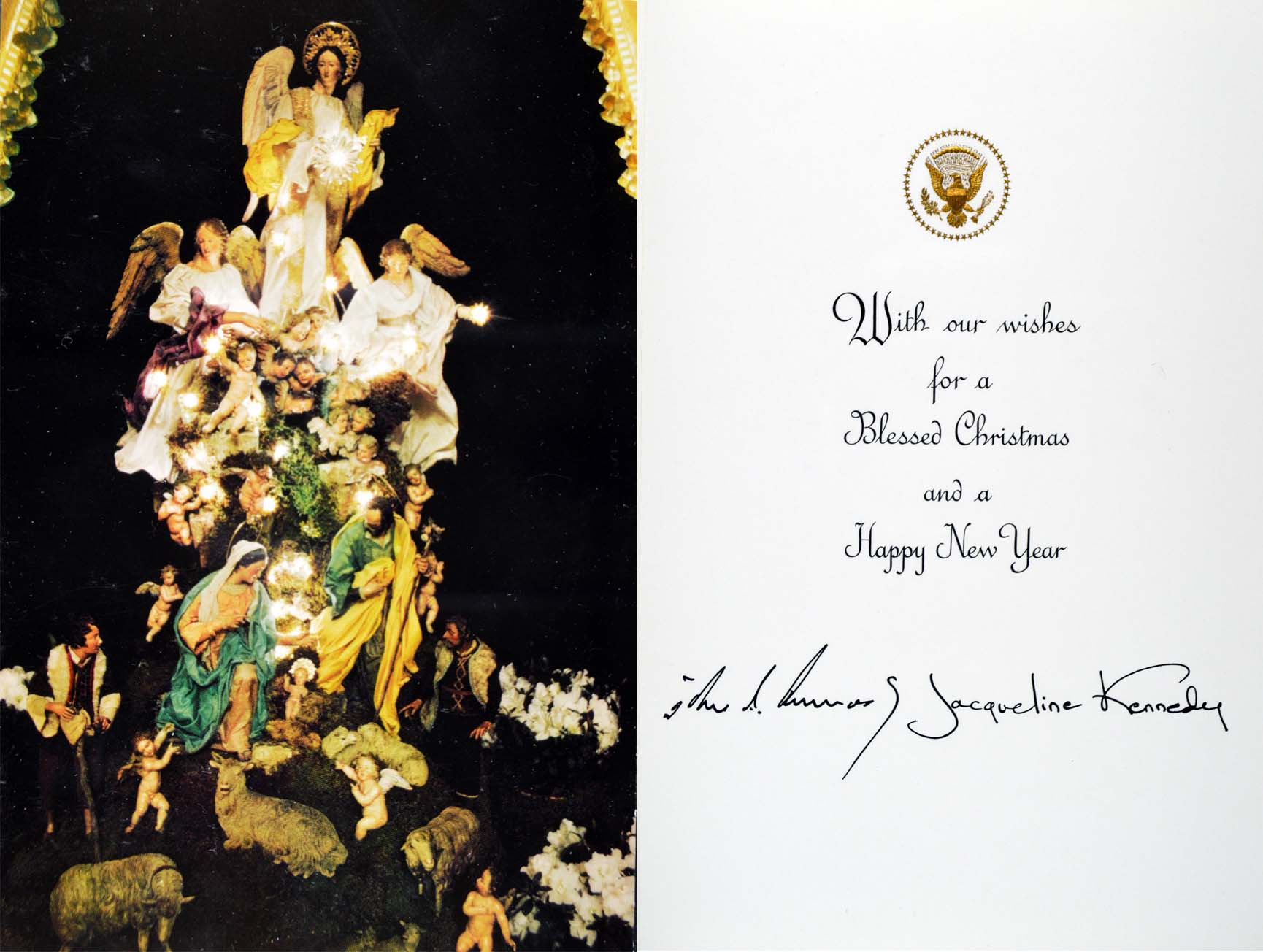
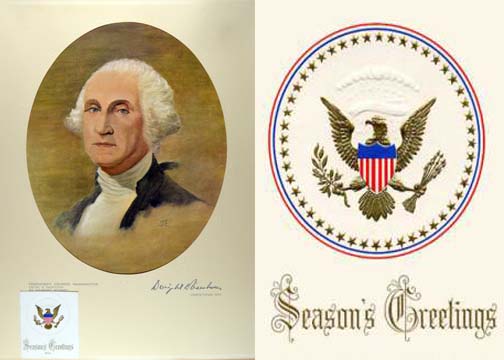

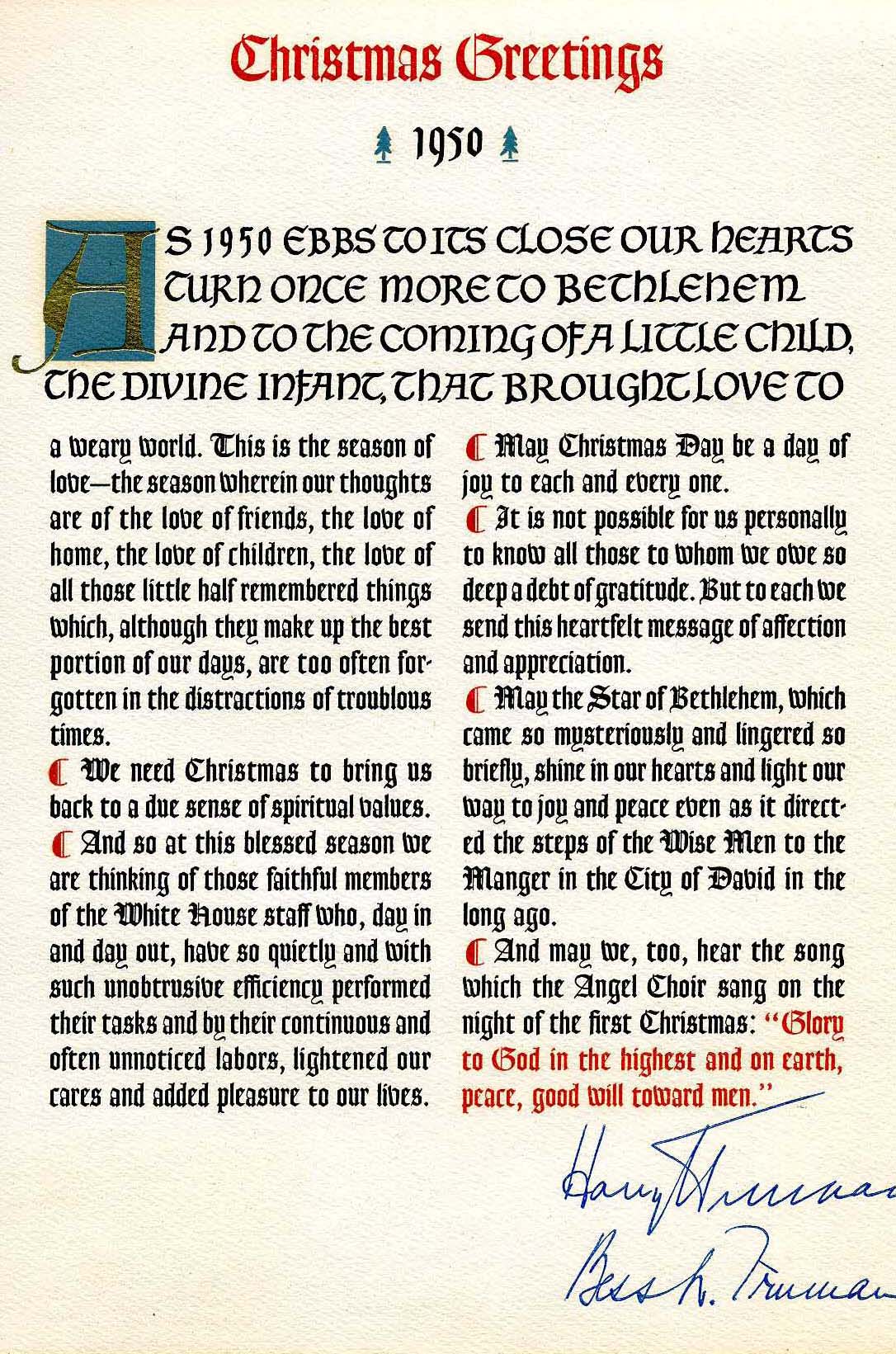
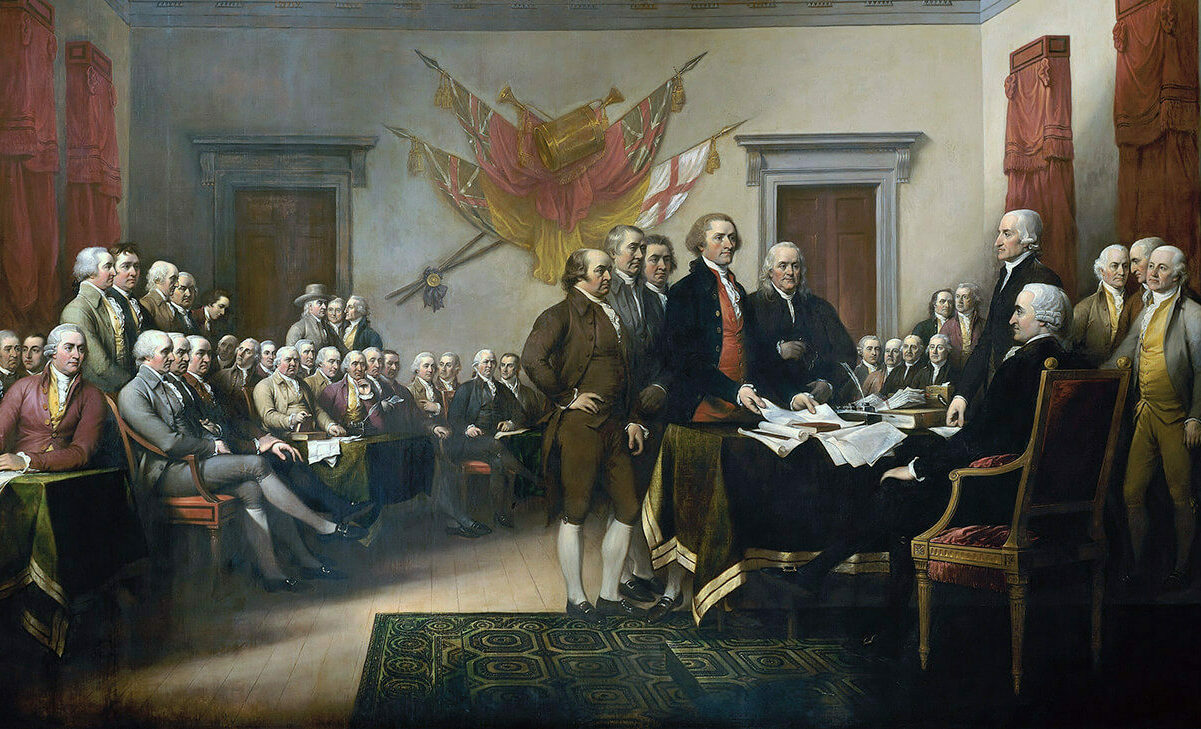
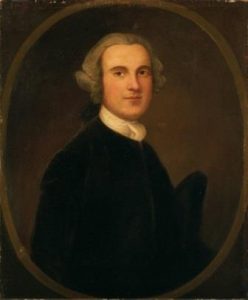 Richard Stockton was one of the 56 signers of the Declaration of Independence. He was one of those who literally gave his life for American liberty. October 1,
Richard Stockton was one of the 56 signers of the Declaration of Independence. He was one of those who literally gave his life for American liberty. October 1, 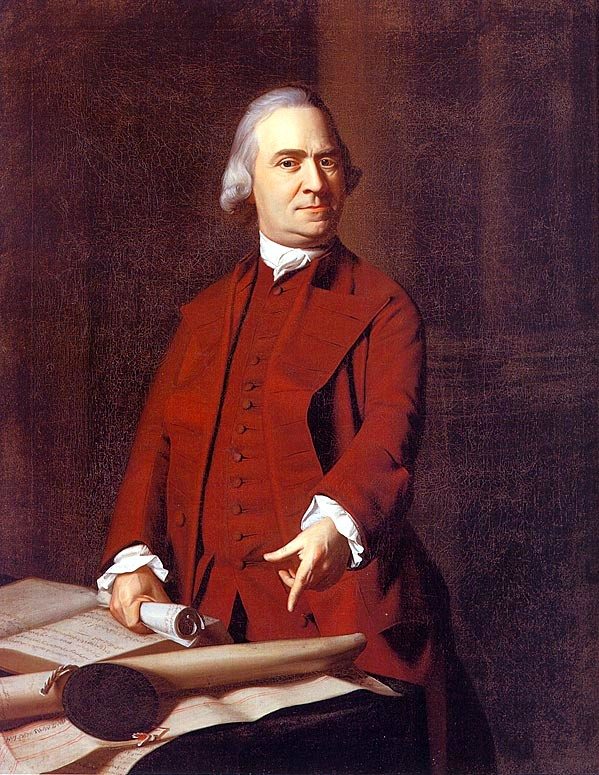
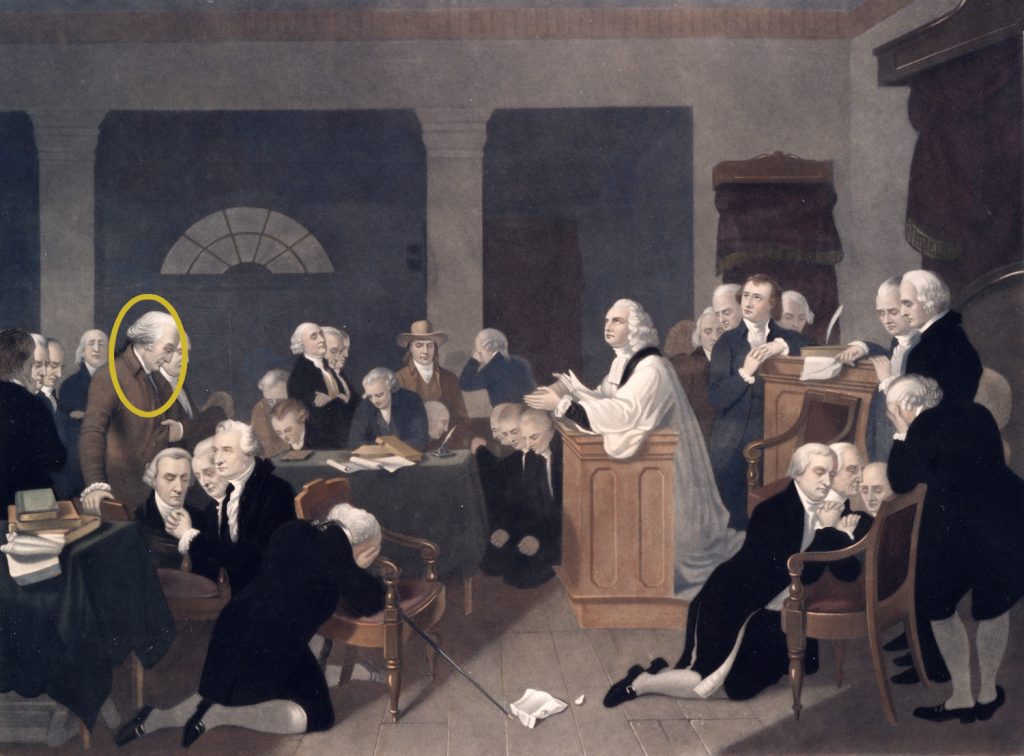
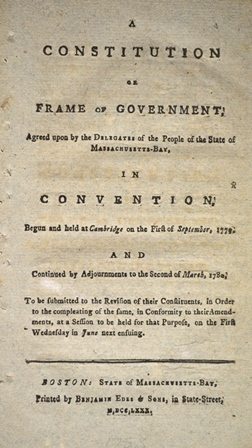
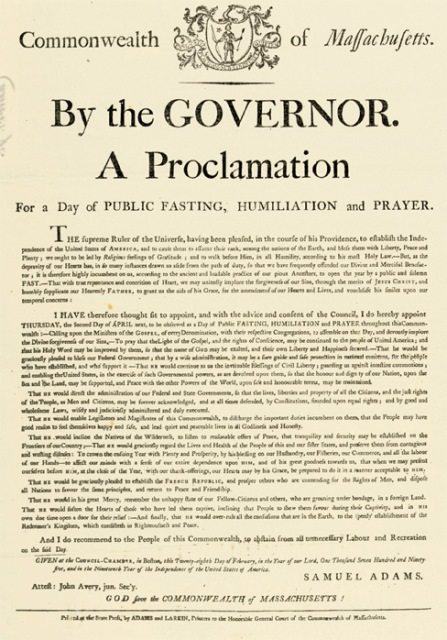
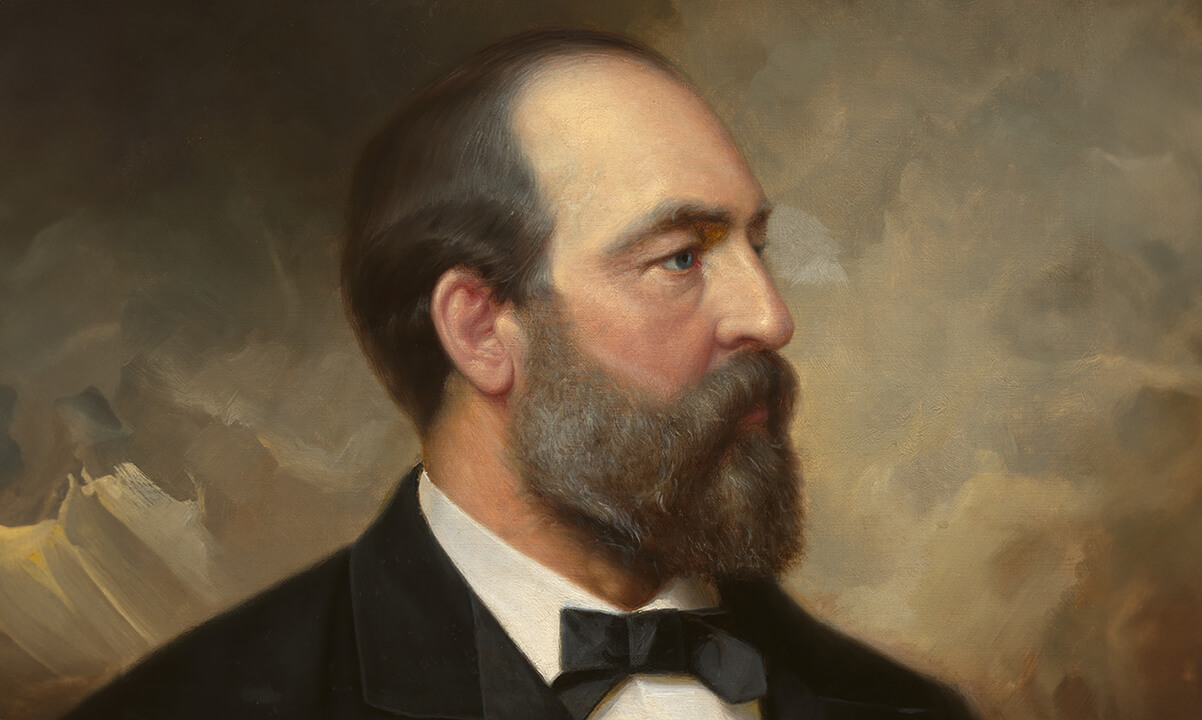
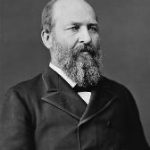
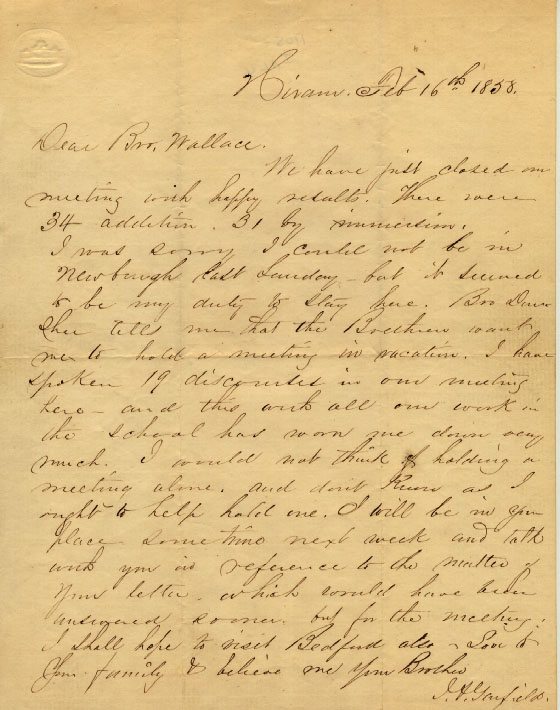

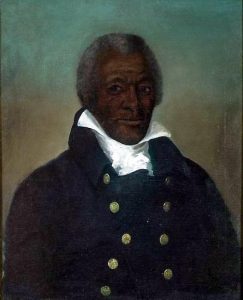 from Virginia worked closely with Marquis de Lafayette.
from Virginia worked closely with Marquis de Lafayette.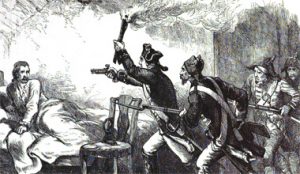 Barton hand-selected about forty elite soldiers, who silently slipped past the main British force and overpowered the guards protecting the general. They had only to break down the door to his room and grab Prescott. One of the black commandos on the mission, Prince Sisson – a powerful man – stepped forward and charged the door. Using his own head as a battering ram, the locked door gave way and Prince entered the quarters and seized the surprised general.
Barton hand-selected about forty elite soldiers, who silently slipped past the main British force and overpowered the guards protecting the general. They had only to break down the door to his room and grab Prescott. One of the black commandos on the mission, Prince Sisson – a powerful man – stepped forward and charged the door. Using his own head as a battering ram, the locked door gave way and Prince entered the quarters and seized the surprised general.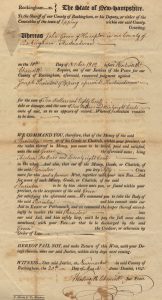 grandson of a slave, had a long career in public office.
grandson of a slave, had a long career in public office.